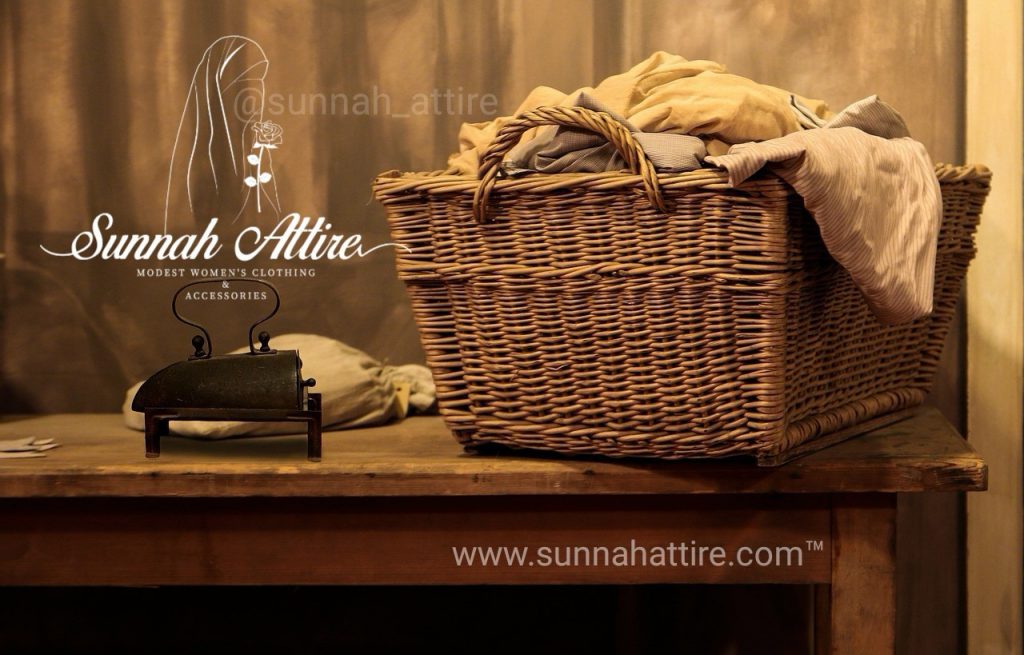
Over the years, sisters have asked how best to wash and care for their jilbab – more commonly how to iron and get the creases out. Nobody wants a crinkly jilbab but equally the ironing struggle is real. subhan’Allah!
The jilbab is not merely a piece of fabric that we throw on to cover us. Some of us want to take great care of this precious ‘drâpe’ and take every effort to launder it in the best way possible.
What evidence is there in the Qur’an and Sunnah regarding this matter?
We are commanded to remove impurity from our clothes because Allah says (interpretation of the meaning):
“And purify your garments”. [al-Muddaththir 74:4]
I’m sure we have all been there. Frantic because our iron wasn’t the right temperature and now our brand new jilbab has singe marks and is frazzled around the seams. Or our most favourite niqaab now has a huge melt mark on the front piece – yes, the one that everyone will see! So disappointing and sometimes even heartbreaking subhan’Allah.
Want to know how to avoid those singes?
Want to know how to get those creases out without burning your precious garments?
Have a read of the following tips that we (Sunnah Attire) have personally acquired over the years:





In Shaa Allah that ought to cover most of the DIY tips but if you have any additional questions or comments to add, you can leave them in the comment section below at the end of this blog post. What we have shared with you is not fact nor set in stone. Everyone has their own experience and ways of doing things – we just thought we would share ours in Shaa Allah, in case it is of benefit.
And above all, the outer garment that we wear to cover and shield ourselves should be clean and presentable but it is our inward character that we should also aim to perfect – as it is towards our hearts and deeds that Allah will look.
Allah says (interpretation of the meaning):
“O Children of Adam! We have bestowed raiment upon you to cover yourselves (screen your private parts) and as an adornment; and the raiment of righteousness, that is better. Such are among the Ayaat (proofs, evidences, verses, lessons, signs, revelations, etc.) of Allah, that they may remember (i.e. leave falsehood and follow truth)”. [al-Araaf 7:26]
The Prophet (peace and blessings of Allah be upon him) told us about the signs of a persons success:
Allah does not look at the outward appearance or wealth of any one of you, but He looks at your hearts and deeds.
(Narrated by Muslim from the hadeeth of Abu Hurayrah). The heart is the seat of taqwa and a man’s essential qualities and the treasures of knowledge, and deeds are the balance in which people will be weighed before Allah, as Allah says (interpretation of the meaning):
“Verily, the most honourable of you with Allah is that (believer) who has At-Taqwaa”. [al-Hujuraat 49:13]